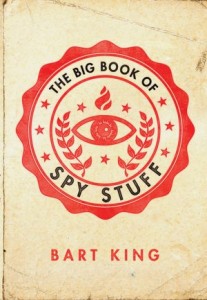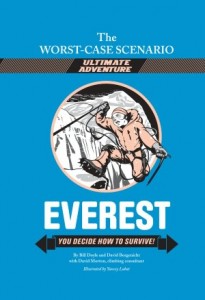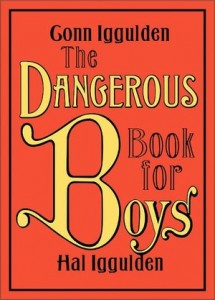So, last Friday the whole boys-and-reading subject came up, and why boys seem to prefer non-fiction. I think this generally true, though there are plenty of exceptions, and boys will read fiction if it includes fires and explosions. (Just kidding.) I think there are a number of reasons for the nonfiction preference, and they apply not only to boys but men. Such as
- Males tend to be problem-solvers, and facts are key to solving problems
- They like knowing how to do stuff. (I like them knowing how to do stuff, too, like fixing leaky faucets. And then doing it.)
- Their famous analytical minds enjoy learning and applying propositional statements, especially around other guys. (e.g., “No, Lee didn’t lose the battle of Gettysburg, it was Longstreet’s fault, because . . .” “Whaddaya mean, Ford didn’t produce any cars with tail fins after 1957??”)
- They enjoy being right. It’s a beautiful thing.

Unfortunately, as we mentioned last Friday, non-fiction is the ugly stepchild of the children’s publishing industry, even though companies like Usborne and DK Publishing do quite well for themselves. The American Library Association, to their credit, realizes that nonfiction should get more respect, and in the last eight years or so have added two more categories to their growing list of Youth Media Awards: the Sibert medal, for outstanding “informational books” published for children, and the YALSA Award for Excellence in Nonfiction for Young Adults. Some of the winners for this year sound interesting, and we’ll try to get to them. In the meantime, our books for today might fit into the “how-to” category, roughly similar to the territory staked out by The Dangerous Book For Boys a few years ago (which I recommend; here’s my review in WORLD Magazine). The difference is that both books contain things boys shouldn’t try to do, but will enjoy knowing about.
The Big Book of Spy Stuff, by Bart King. Gibbs Smith (Utah), 2011, 300 pages. Age/interest level, 10-14.
This is the sort of book that moms endure and boys love: lots of bad jokes, corny cartoons, and telegraphed nudges, but also real information, both historic al and contemporary. Want to know about Eavesdropping, Surveillance, Disguises and Alibis, Misinformation, Sabotage and Code breaking? A 12-year-old will find all that here, plus subjects he never knew existed. The author leads out with a chapter on “Ethical Issues,” which is a good place to start. Because you may not want your son eavesdropping on your cell phone conversations (page 75) or staking out the neighbors (p. 87), but he’ll love knowing how, even if he can’t. Be sure to point out the disclaimer on the publishing info page (that’s the one facing the title page). The Big Book wouldn’t be so big if it didn’t include a glossary, so this one does–spying terms I didn’t even know. The appendix also includes a list of agencies, a good resource in case your child is considering a career in espionage. Or, if he’s interested in writing detective or spy stories, don’t overlook its value as a source book.
al and contemporary. Want to know about Eavesdropping, Surveillance, Disguises and Alibis, Misinformation, Sabotage and Code breaking? A 12-year-old will find all that here, plus subjects he never knew existed. The author leads out with a chapter on “Ethical Issues,” which is a good place to start. Because you may not want your son eavesdropping on your cell phone conversations (page 75) or staking out the neighbors (p. 87), but he’ll love knowing how, even if he can’t. Be sure to point out the disclaimer on the publishing info page (that’s the one facing the title page). The Big Book wouldn’t be so big if it didn’t include a glossary, so this one does–spying terms I didn’t even know. The appendix also includes a list of agencies, a good resource in case your child is considering a career in espionage. Or, if he’s interested in writing detective or spy stories, don’t overlook its value as a source book.
Bottom line: Some questionable content, if you think your boy will actually try to tap a phone. Otherwise, good clean fun, though no particular literary quality. Bart King has written other Big Books, which I haven’t read, but a discerning mom can use her judgment: Boy Stuff, Girl Stuff, Gross Stuff, and the King Size Book of Fun.
Worst Case Scenario Ultimate Adventure: Everest, by Bill Doyle and David Borgenicht, illustrated by Yancy Labat. Chronicle Books, 2011, 203 pages. Age/interest level: 9-14.
Remember the Choose Your Own Adventure books from the mid-eighties (and periodically ever since), where readers were  instructed to make critical choices and turn to the pages that revealed the consequence? After the novelty wore off, they didn’t have much staying value, because good stories are structured, not random. Worst-Case Scenario is a reality-based version of CYOA, and makes much better use of the idea. Instead of random choices in a fantasy scenario, the reader is given an Expedition File with short biographies of his team members and useful information he’ll need to make intelligent decisions about the climb ahead. For example: the adventure begins in Lukla, Tibet, the last town, where a decision whether to eat apple pie or the native dish of Dal Bhat could lead to food poisoning and a short end tot he expedition. But the reader who remembers from the file that native food is usually to be trusted over American adaptations, because the natives know how to make their own stuff, is liable to make the right decision.
instructed to make critical choices and turn to the pages that revealed the consequence? After the novelty wore off, they didn’t have much staying value, because good stories are structured, not random. Worst-Case Scenario is a reality-based version of CYOA, and makes much better use of the idea. Instead of random choices in a fantasy scenario, the reader is given an Expedition File with short biographies of his team members and useful information he’ll need to make intelligent decisions about the climb ahead. For example: the adventure begins in Lukla, Tibet, the last town, where a decision whether to eat apple pie or the native dish of Dal Bhat could lead to food poisoning and a short end tot he expedition. But the reader who remembers from the file that native food is usually to be trusted over American adaptations, because the natives know how to make their own stuff, is liable to make the right decision.
The stakes get higher with the elevation, and some decisions could lead to a quick slide to oblivion or ending up as a popsickle on the Hillary Step. Obviously, thrills and chills galore: some fatal, most only disappointing. The ultimate reward for all the right decisions is fifteen minutes at the top of the world with your team (or what’s left of it). All the possible scenarios are based on fact, and there are plenty of facts, including how to urinate in high elevation gear. The narrative includes some Buddhist elements, in keeping with the Tibetan culture.
Bottom line: I thought it was kinda cool, and nothing objectionable. Other Worst-Case-Scenario books include Mars and Amazon (June 2012).
Kids who think they might actually like to try Everest themselves someday should read the novel Peak, by Roland Smith, which I review here. For other books of the how-to sort, see our round-up of literary cookbooks and post on making your own book.
Stay Up to Date!
Get the information you need to make wise choices about books for your children and teens.
Our weekly newsletter includes our latest reviews, related links from around the web, a featured book list, book trivia, and more. We never sell your information. You may unsubscribe at any time.
Support our writers and help keep Redeemed Reader ad-free by joining the Redeemed Reader Fellowship.
Stay Up to Date!
Get the information you need to make wise choices about books for your children and teens.
Our weekly newsletter includes our latest reviews, related links from around the web, a featured book list, book trivia, and more. We never sell your information. You may unsubscribe at any time.
We'd love to hear from you!
Our comments are now limited to our members (both Silver and Golden Key). Members, you just need to log in with your normal log-in credentials!
Not a member yet? You can join the Silver Key ($2.99/month) for a free 2-week trial. Cancel at any time. Find out more about membership here.
2 Comments
Leave a Comment
You must be logged in to post a comment.


Thanks for the reviews. As the mom of a daughter who loves all things detective and spy related, I think we’ll be reading “The Big Book of Spy Stuff” soon!!!
I bought “The Dangerous Book for Boys” a few years ago-in fact I think it was your “World” review that made the book sound so appealing. It truly is a gold mine of history and activities-although, like you, I don’t agree with everything (i.e. certain books) they recommend but definitely a worthwhile buy.
I haven’t read the others, so I’ll have to give them a look-see, too.
Thanks for reviewing them.